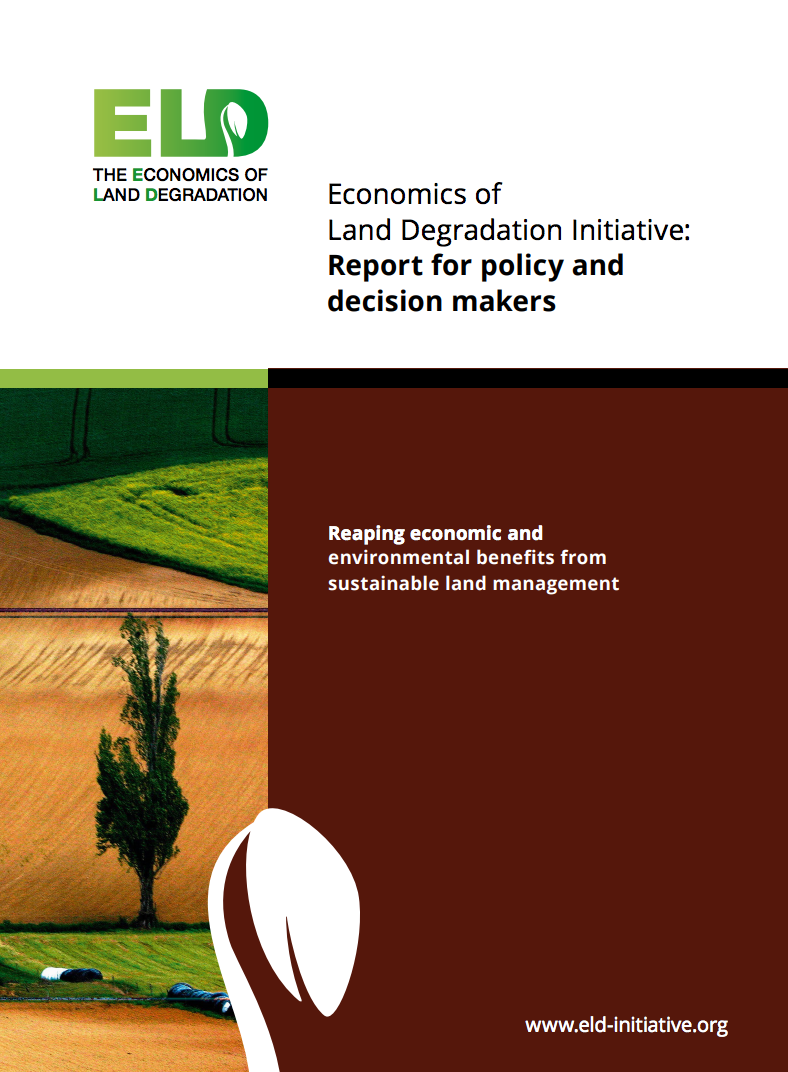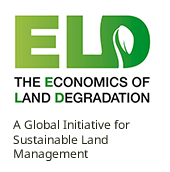Resource information
Considering the figures given in the foreword and found in the literature about the on-going and increasing degradation of land and land-based ecosystems and their productivity, this indicates a pressing need to re-design current policies and clearly defined guidance for future action for sustainable land management. Based on the work of scientists, practitioners, and experts, the ELD Initiative provides a global assessment of the economics of land degradation, and shows that investment in sustainable land management is not only economically rewarding, but crucial for the wellbeing of current and future generations. To foster the integration of the economic value of the ecosystem services provided by land into decision making, the ELD Initiative presents several approaches that policy-/decision-makers can fruitfully build on.
Thus, this report undertaken by the ELD Initiative provides evidence of how increasingly scarce resources can be conserved and presents tools to promote and secure future wealth and human well-being through sustainable land management for policy-/decision-makers. It emphasizes taking long-term benefits into account and focuses on practical solutions, as well as the context in which sustainable land management occurs. The report aims to ensure the returns of sustainable land management (e.g., economic growth, food security, sustainable livelihoods and reduced conflict over natural resources) are realised through the use of robust economic valuation methodologies. The report also highlights that sustainable land management provides additional benefits at the national level through obligations under other multilateral environmental agreements, such as the UN Convention to Combat Desertification (UNCCD), e.g., through achieving land degradation neutrality, the UNFCCC, and the Convention on Biological Diversity (CBD).
While the suggested economic approaches – in particular cost-benefit analyses and total economic valuation – help policy-/decision-makers to take informed decisions against land degradation, the reality of on-the-ground activities and demands must also be considered, in order for sustainable land management to actually be implemented. To this end, this report also provides a range of environmental economic instruments through which the adoption and effective implementation of measures can be potentially incentivised for all involved and affected actors.


